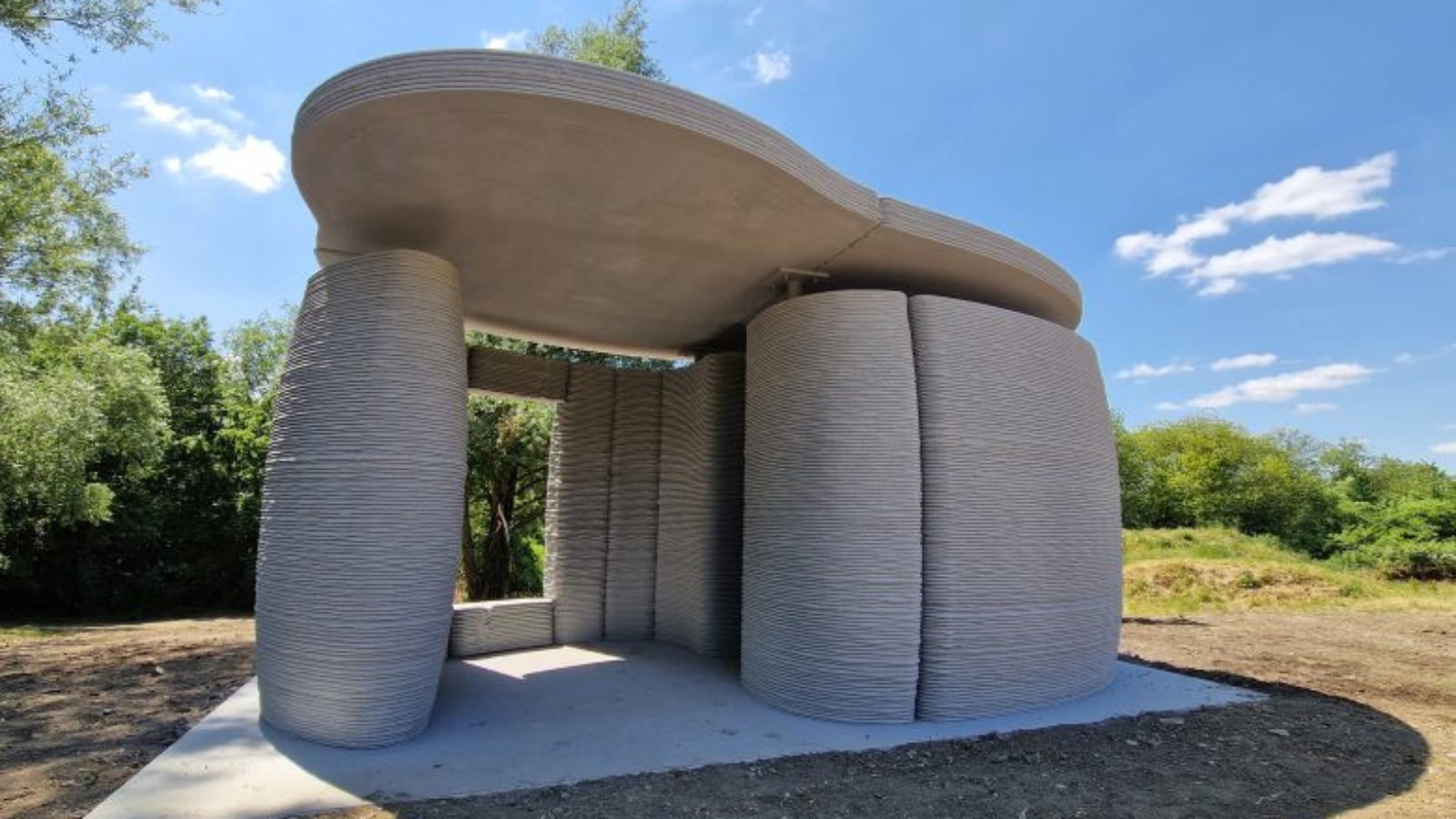3D printing stands for progress in construction like hardly any other process. It not only enables the implementation of individual geometries and components made of concrete that would not be possible with conventional formwork technology but also optimizes production processes and accelerates the digitization process in the construction industry. The construction of a 3D printed tiny house in North Rhine-Westphalia by MENSE KORTE also highlights the use of more sustainable building materials for printing.
Together, Röser GmbH from Laupheim, which specializes in 3D-printed prefabricated parts, the international developer and manufacturer of construction chemical products MC-Bauchemie and the planning office MENSE KORTE from Münsterland managed to implement this visionary construction project in 18 months.

The tiny house is located on the area of a biker railway in Beckum. With its large storage room and covered, open entrance area, the mini house offers the children and young people enough space to store tools and equipment from the sports facility. The Tiny House also impresses from the outside. Its elliptical facade curves outwards and runs straight into the vertical structure of the inner shell. A special design that is only possible with 3D printing.
Finished parts from the 3D printer
Before the miniature house could be printed, the design was developed using modeling software. In addition, numerous material tests were carried out to find the right composition for the requirements of the tiny house. In the next step, the finished concept was transferred directly to the printer’s so-called slicer software. The individual segments of the mini house could then be printed at the 3D printing site of the Röser company in Laupheim.
Manufacturing on Demand

They were then transported more than 500 kilometers from Laupheim to Beckum on a closed inboard loader. A real challenge given the special size and shape of the concrete components. “At first glance, the long transport route contradicts the desired CO2 reduction, However, we wanted to consciously subject the finished parts to this stress test right at the premiere,” says Dennis Bräunche, Technical Field Service at Röser. On the construction site, the prefabricated parts only had to be placed on a precast concrete slab and connected to one another with anchors. The mini house could be handed over to its owner within just a few hours.
70% fewer CO₂ emissions
MC-Bauchemie has been researching 3D printing and sustainable solutions for the concrete and construction industry for many years – ideal conditions for the project in Beckum. It was the declared goal of those involved in the project to develop a product that offers the statically required properties and the processing behavior required for 3D printing and at the same time significantly reduces CO₂ emissions. In order to meet the requirements of high-quality 3D printing, the material used must have thixotropic behavior. This means that as long as energy is supplied to the material, it is deformable and pumpable, but without energy supply it is stable.

The special 3D dry mortar MC-PowerPrint GeCO₂ from MENSE KORTE was used, which, in addition to good pumpability, also has the necessary thixotropy and stability. in order to enable a nice and even print image after several printing layers without deformation due to its own weight. As an alternative to cement, MC-PowerPrint GeCO₂ uses an additized system of blast furnace slag and fly ash as a binding agent. “Overall, the use of alternative binders based on industrial by-products can save around 70% of CO₂ emissions compared to cementitious mortar products,” emphasizes Kai Markiefka, Product Manager at MC, the significant reduction in the ecological footprint.
A new construction standard
The project in Beckum was a complete success, which could only be realized thanks to the good cooperation and willingness to innovate of everyone involved. “In the future, it will be necessary to develop further potentials of the building printing process in order to manifest the printing of buildings as a future-oriented and sustainable construction standard,” explains Waldemar Korte from the planning office MENSE-KORTE, “so we will soon be able to implement ever larger building typologies with a wide variety of uses. It is also crucial to keep optimizing and diversifying pressure mortar in order to achieve even more sustainability in the construction process.”
You might also like:
RENCA builds first house using geopolymer 3D printing mortar:
* This article is reprinted from 3D Printing Media Network. If you are involved in infringement, please contact us to delete it.
Author: Davide Sher


Leave A Comment